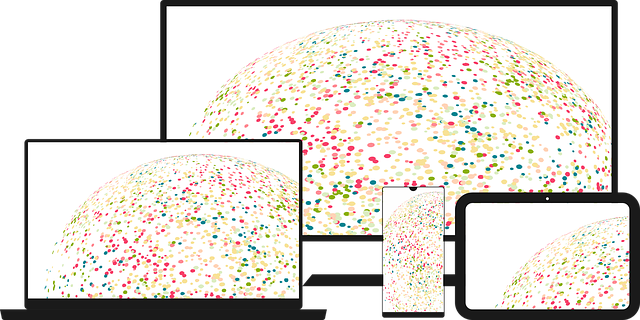The rise of "ghost kitchens," powered by AI integration, has transformed the food delivery landscape through dynamic pricing algorithms that adjust menu prices in real-time based on demand, competition, and time of day. AI analyzes vast datasets to identify high-demand zones, enabling efficient resource allocation and competitive pricing strategies. By leveraging machine learning, these virtual kitchens anticipate peak hours and optimize profitability while expanding into new locations, offering numerous benefits such as dynamic pricing and increased sales for restaurateurs. However, challenges like data privacy concerns and ethical considerations hinder widespread adoption, requiring addressing for sustainable growth and enhanced customer experiences in the AI dark kitchen sector.
“Unveiling the secrets behind the scenes of food delivery, this article explores the rise of AI ghost kitchen dynamic pricing algorithms. As the food industry navigates the complexities of AI-driven strategies, understanding these algorithms is key to unlocking the potential of dark kitchen expansion and precise location targeting. We delve into their mechanics, benefits, and challenges, offering insights into how AI revolutionizes pricing strategies in the fast-paced world of online food delivery.”
- Understanding AI Ghost Kitchen Dynamic Pricing Algorithms
- The Role of AI in Dark Kitchen Expansion and Location Targeting
- Benefits, Challenges, and Future Prospects of AI-Driven Pricing Strategies in Food Delivery
Understanding AI Ghost Kitchen Dynamic Pricing Algorithms

The rise of ghost kitchens, or dark kitchens, has been a game-changer in the food delivery landscape, especially with the AI integration that powers their dynamic pricing algorithms. These algorithms are designed to optimize revenue by adjusting menu prices in real-time based on various factors such as demand, competition, and time of day. As these virtual kitchens expand into new locations, targeting specific areas becomes crucial for success. AI plays a pivotal role here by analyzing vast datasets to identify high-demand zones, enabling efficient resource allocation and pricing strategies.
By leveraging machine learning, ghost kitchen businesses can anticipate peak hours and adjust their pricing accordingly, ensuring maximum profitability. This dynamic approach allows them to compete with brick-and-mortar restaurants while offering competitive prices. As the market continues to evolve, understanding these AI-driven pricing algorithms is essential for restaurant owners and entrepreneurs looking to thrive in the ever-changing food delivery sector.
The Role of AI in Dark Kitchen Expansion and Location Targeting

The integration of Artificial Intelligence (AI) has been pivotal in the rapid expansion and optimization of Dark Kitchens, also known as ghost kitchens. AI algorithms play a strategic role in location targeting by analyzing vast datasets to identify areas with high demand for food delivery services but limited restaurant presence. This technology enables efficient allocation of culinary resources, ensuring that customers in remote or underserved locations can access a diverse range of cuisine options promptly.
By learning from historical order patterns and real-time market trends, AI dynamic pricing algorithms facilitate price adjustments for food deliveries within dark kitchens. These adjustments cater to varying demands, peak hours, and competitive landscapes, ultimately enhancing customer satisfaction while optimizing revenue for both restaurateurs and delivery platforms. The AI-driven approach allows for a more personalized and responsive food delivery ecosystem, marking a significant shift in the way we interact with culinary services.
Benefits, Challenges, and Future Prospects of AI-Driven Pricing Strategies in Food Delivery

The integration of AI-driven pricing strategies in food delivery services has brought about significant advantages for both businesses and consumers, especially with the rise of ghost kitchens or dark kitchens. One key benefit is dynamic pricing, where algorithms adjust prices based on demand, availability, and competition, ensuring optimal revenue while offering attractive deals to customers. This strategy allows restaurants to expand their reach into new locations and target specific areas during peak hours, thereby increasing sales and customer satisfaction.
However, challenges exist in implementing these AI algorithms, particularly regarding data privacy and ethical considerations. Accurate pricing models require vast amounts of data, including location-based information, consumer behavior patterns, and market trends, which raises concerns about data security and user consent. Moreover, maintaining transparency in AI decision-making processes is essential to building trust among customers. As the AI dark kitchen concept continues to evolve, addressing these challenges will be crucial to unlocking the full potential of this technology, ensuring sustainable growth, and enhancing customer experiences in the food delivery sector.
AI ghost kitchen dynamic pricing algorithms are transforming the food delivery industry by optimizing pricing strategies through advanced machine learning techniques. The integration of AI facilitates rapid growth in dark kitchen expansion, enabling precise location targeting and enhancing overall customer experiences. While challenges exist, such as data privacy concerns and algorithmic transparency, the benefits outweigh these drawbacks. As technology advances, expect to see more sophisticated AI-driven pricing models, revolutionizing how we perceive and access food delivery services in the future.
